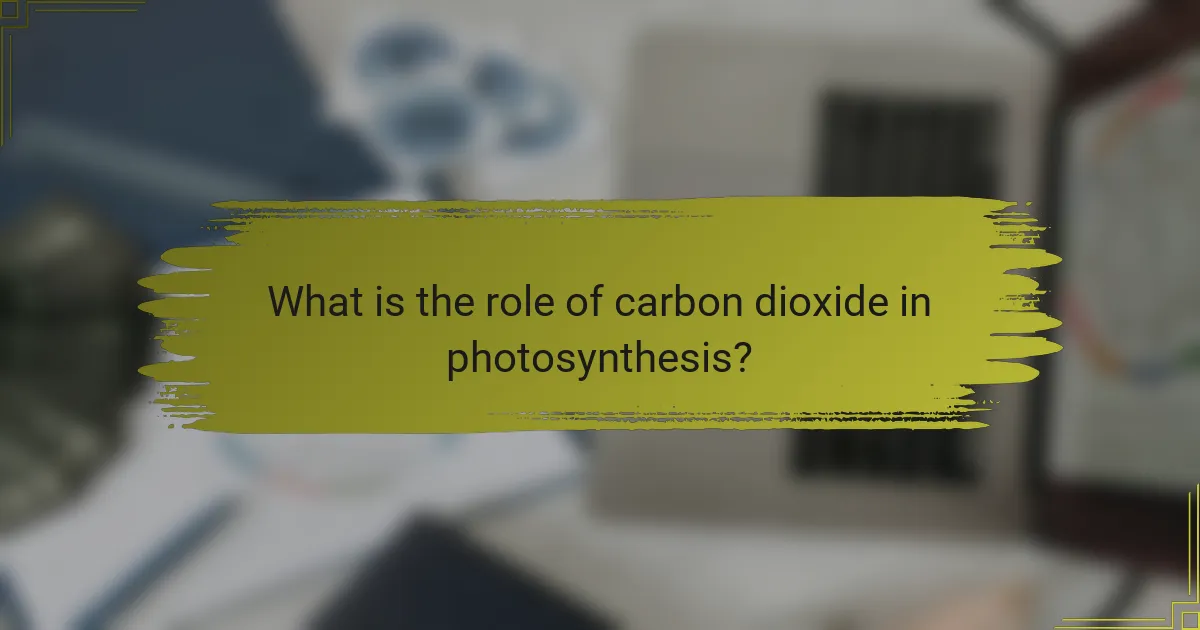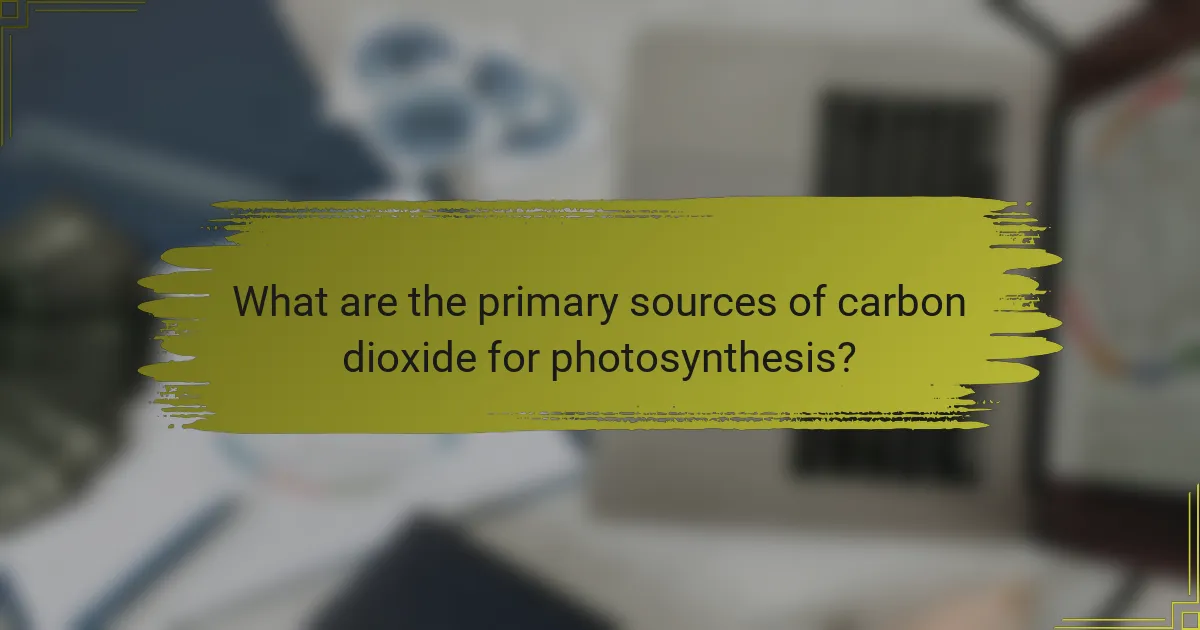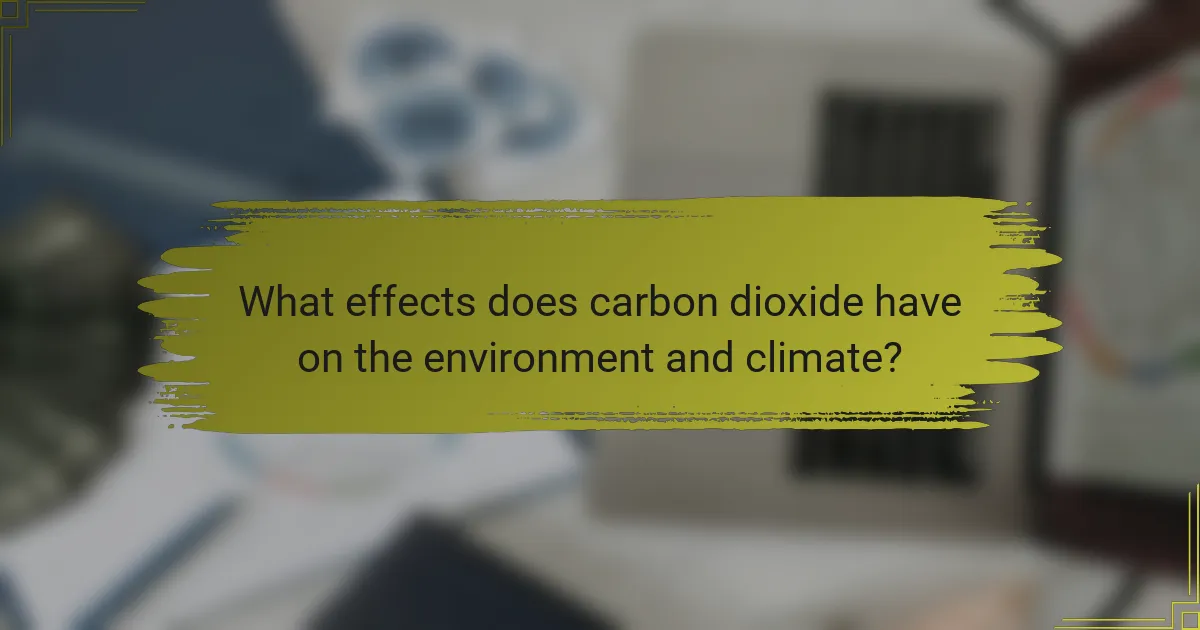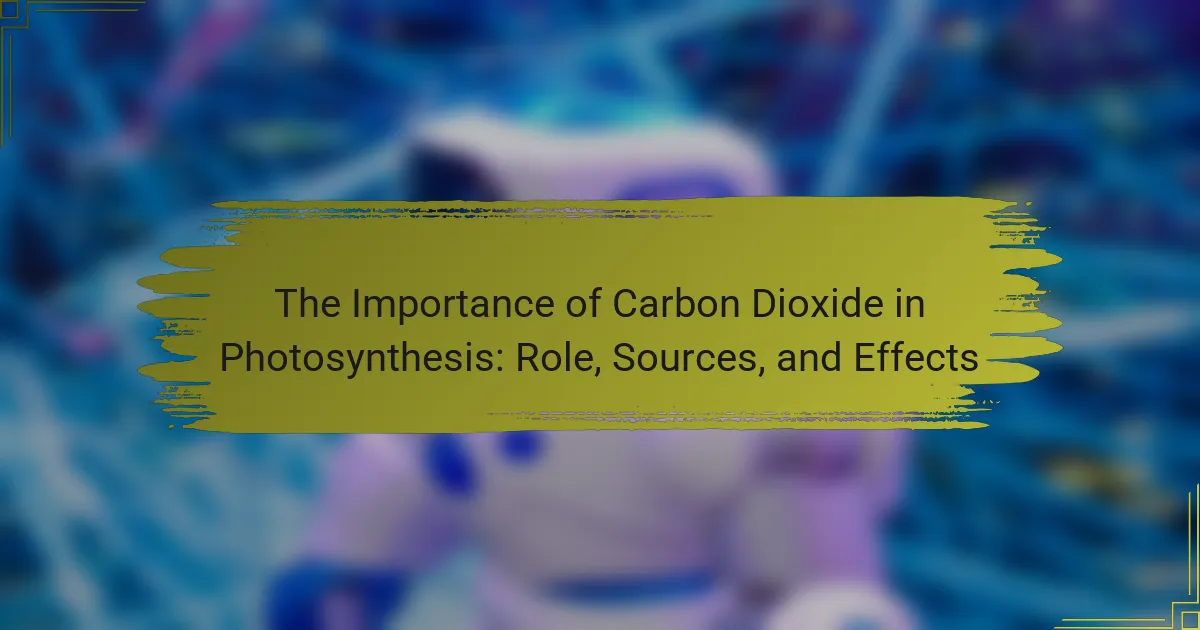
What is the role of carbon dioxide in photosynthesis?
Carbon dioxide is essential for photosynthesis as it serves as a key reactant. During this process, plants absorb carbon dioxide from the atmosphere through small openings called stomata. This gas is then combined with water and sunlight to produce glucose and oxygen. The glucose serves as an energy source for the plant. According to research, approximately 6 molecules of carbon dioxide are required to produce one molecule of glucose. This demonstrates the critical role of carbon dioxide in sustaining plant life and, by extension, the entire ecosystem.
How does carbon dioxide contribute to the photosynthesis process?
Carbon dioxide is essential for the photosynthesis process in plants. During photosynthesis, plants absorb carbon dioxide from the atmosphere through small openings called stomata. This gas then enters the chloroplasts, where it combines with water and sunlight to produce glucose and oxygen. The overall chemical equation for photosynthesis is 6CO2 + 6H2O + light energy → C6H12O6 + 6O2. This equation shows that carbon dioxide is a primary reactant. Without sufficient carbon dioxide, plants cannot produce the energy they need for growth and survival. Studies indicate that increased carbon dioxide levels can enhance photosynthetic rates, leading to greater plant biomass.
What are the steps involving carbon dioxide in photosynthesis?
Carbon dioxide is a crucial component in photosynthesis. The process begins when carbon dioxide enters plant leaves through small openings called stomata. Once inside, carbon dioxide is fixed in the Calvin cycle, a series of biochemical reactions. During this cycle, carbon dioxide combines with ribulose bisphosphate (RuBP) to form 3-phosphoglycerate (3-PGA). This reaction is catalyzed by the enzyme RuBisCO. Subsequently, ATP and NADPH, generated from the light-dependent reactions, convert 3-PGA into glyceraldehyde-3-phosphate (G3P). Some G3P molecules are used to regenerate RuBP, allowing the cycle to continue. Ultimately, other G3P molecules contribute to the formation of glucose and other carbohydrates. This entire process is essential for converting inorganic carbon into organic compounds, supporting plant growth and energy needs.
How does carbon dioxide affect the rate of photosynthesis?
Carbon dioxide directly influences the rate of photosynthesis. Increased levels of carbon dioxide enhance the photosynthetic process. Plants utilize carbon dioxide to produce glucose and oxygen during photosynthesis. The rate of photosynthesis rises with higher carbon dioxide concentrations up to a certain point. This phenomenon is observed in controlled environments, such as greenhouses. Studies indicate that doubling carbon dioxide levels can increase the rate of photosynthesis by 30% to 50% in some plants. However, other factors like light intensity and temperature also play critical roles. Ultimately, carbon dioxide is a vital component for optimal photosynthesis.
Why is carbon dioxide considered essential for plant life?
Carbon dioxide is essential for plant life because it is a key ingredient in photosynthesis. During photosynthesis, plants convert carbon dioxide and sunlight into glucose and oxygen. This process occurs primarily in the chloroplasts of plant cells. Carbon dioxide enters the plant through small openings called stomata. Once inside, it combines with water to form glucose, which serves as energy for growth and development. Without carbon dioxide, plants cannot produce the energy needed for survival. Studies show that elevated carbon dioxide levels can enhance photosynthesis rates, leading to increased plant growth. This underscores the critical role of carbon dioxide in maintaining healthy ecosystems.
What are the consequences of carbon dioxide deficiency in plants?
Carbon dioxide deficiency in plants leads to reduced photosynthesis. This reduction occurs because carbon dioxide is a critical component for the photosynthetic process. Without sufficient carbon dioxide, plants cannot produce enough glucose. Consequently, this affects their growth and overall health. Symptoms of deficiency include stunted growth and yellowing leaves. In severe cases, plants may fail to thrive or even die. Studies indicate that optimal carbon dioxide levels are crucial for maximizing plant productivity. Therefore, maintaining appropriate carbon dioxide levels is essential for healthy plant development.
How do plants adapt to varying levels of carbon dioxide?
Plants adapt to varying levels of carbon dioxide by adjusting their photosynthetic rates and stomatal conductance. In high CO2 environments, many plants increase photosynthesis efficiency. This leads to greater biomass production. Conversely, in low CO2 conditions, plants may reduce stomatal opening to conserve water. This adaptation helps maintain internal CO2 levels for photosynthesis. Some species also exhibit changes in leaf morphology to optimize light capture. For instance, thicker leaves can enhance CO2 absorption. Research indicates that elevated CO2 can lead to increased growth rates in certain species, as noted in studies by Ainsworth and Rogers (2007) in “Plant Physiology.” These adaptations are crucial for survival in changing atmospheric conditions.

What are the primary sources of carbon dioxide for photosynthesis?
The primary sources of carbon dioxide for photosynthesis are the atmosphere and respiration from organisms. Atmospheric carbon dioxide constitutes about 0.04% of the air. Plants absorb this gas through small openings called stomata. Additionally, carbon dioxide is released during cellular respiration by animals and microorganisms. This process contributes to the overall carbon dioxide levels in the environment. These sources are crucial for the photosynthesis process, allowing plants to produce glucose and oxygen.
How do natural processes contribute to carbon dioxide availability?
Natural processes contribute to carbon dioxide availability through respiration, decomposition, and volcanic activity. During respiration, organisms release carbon dioxide as they convert oxygen and glucose into energy. This process occurs in animals, plants, and microorganisms. Decomposition of organic matter also releases carbon dioxide back into the atmosphere. Microbes break down dead plants and animals, facilitating this release. Additionally, volcanic eruptions emit carbon dioxide directly into the atmosphere. According to the U.S. Geological Survey, volcanic activity contributes approximately 0.15 to 0.26 gigatons of carbon dioxide annually. These natural processes collectively enhance the availability of carbon dioxide essential for photosynthesis.
What role do oceans and forests play in the carbon dioxide cycle?
Oceans and forests are crucial components of the carbon dioxide cycle. Oceans absorb approximately 30% of atmospheric CO2 through processes like diffusion and photosynthesis by marine plants. This absorption helps regulate global temperatures. Forests, on the other hand, sequester carbon dioxide through photosynthesis, converting CO2 into organic matter. Trees store carbon in their biomass, which contributes to long-term carbon storage. Together, oceans and forests play a vital role in mitigating climate change by reducing the amount of CO2 in the atmosphere. This interaction is essential for maintaining ecological balance and supporting life on Earth.
How do human activities impact carbon dioxide levels?
Human activities significantly increase carbon dioxide levels in the atmosphere. The burning of fossil fuels, such as coal, oil, and natural gas, releases large amounts of CO2. Deforestation also contributes by reducing the number of trees that absorb CO2. Industrial processes emit CO2 during manufacturing and chemical reactions. Agriculture practices, including livestock production, release methane, which can convert to CO2 over time. According to the Global Carbon Project, human activities added approximately 36.4 billion metric tons of CO2 to the atmosphere in 2019. This increase enhances the greenhouse effect, leading to global warming and climate change.
What are the different forms of carbon dioxide sources?
Carbon dioxide sources exist in various forms. Natural sources include respiration from animals and plants. Decomposition of organic matter also releases carbon dioxide. Volcanic eruptions emit carbon dioxide from the earth’s interior. Human activities contribute significantly through fossil fuel combustion. Industrial processes, such as cement production, generate carbon dioxide. Land-use changes, like deforestation, increase atmospheric carbon dioxide levels. Each of these sources plays a role in the carbon cycle.
What are the natural vs. anthropogenic sources of carbon dioxide?
Natural sources of carbon dioxide include volcanic eruptions, respiration by plants and animals, and decomposition of organic matter. These processes release carbon dioxide into the atmosphere as part of the Earth’s carbon cycle. For example, volcanic eruptions can release millions of tons of carbon dioxide. Respiration contributes to carbon dioxide levels as living organisms metabolize food.
Anthropogenic sources of carbon dioxide primarily stem from human activities. Burning fossil fuels for energy and transportation is a significant contributor. Industrial processes, deforestation, and land-use changes also release substantial amounts of carbon dioxide. In 2019, fossil fuel combustion accounted for approximately 89% of global carbon dioxide emissions.
Both natural and anthropogenic sources play crucial roles in the overall carbon dioxide balance in the atmosphere. Understanding these sources helps in addressing climate change and its impacts.
How do industrial processes contribute to carbon dioxide emissions?
Industrial processes contribute to carbon dioxide emissions primarily through the combustion of fossil fuels. These processes include manufacturing, energy production, and transportation. For instance, in cement production, limestone is heated, releasing CO2 as a byproduct. The energy required for these processes often comes from coal, oil, or natural gas, which emit CO2 when burned. According to the International Energy Agency, industrial activities were responsible for about 24% of global CO2 emissions in 2019. This significant contribution highlights the impact of industrial operations on climate change.

What effects does carbon dioxide have on the environment and climate?
Carbon dioxide significantly affects the environment and climate. It is a greenhouse gas that traps heat in the atmosphere. This leads to global warming and climate change. Increased carbon dioxide levels contribute to rising temperatures. According to the Intergovernmental Panel on Climate Change, atmospheric CO2 levels have risen by over 40% since the pre-industrial era. This rise correlates with extreme weather events and changing precipitation patterns. Ecosystems are affected as species struggle to adapt to these changes. Ocean acidification occurs as CO2 dissolves in seawater, harming marine life. These effects highlight the critical role of carbon dioxide in climate dynamics.
How does increased carbon dioxide influence global warming?
Increased carbon dioxide (CO2) influences global warming by enhancing the greenhouse effect. CO2 traps heat in the Earth’s atmosphere, preventing it from escaping into space. This leads to an increase in global temperatures. According to the Intergovernmental Panel on Climate Change (IPCC), CO2 levels have risen from about 280 parts per million (ppm) before the Industrial Revolution to over 400 ppm today. This increase correlates with rising average global temperatures. The burning of fossil fuels and deforestation are major sources of CO2 emissions. These activities contribute significantly to the concentration of greenhouse gases in the atmosphere. As a result, the Earth’s climate system experiences changes that can lead to severe weather events and other environmental impacts.
What are the potential ecological impacts of rising carbon dioxide levels?
Rising carbon dioxide levels can lead to significant ecological impacts. Increased CO2 enhances plant growth, particularly in C3 plants. This phenomenon can alter species composition in ecosystems. Higher CO2 levels may also affect soil nutrient cycling. Elevated carbon levels can lead to ocean acidification, harming marine life. Coral reefs are particularly vulnerable to these changes. Additionally, changes in plant growth can impact herbivore populations. Disruption of food webs may occur as a result.
How does carbon dioxide affect biodiversity and ecosystems?
Carbon dioxide significantly impacts biodiversity and ecosystems by influencing climate change and altering habitats. Increased carbon dioxide levels contribute to global warming. This warming affects temperature and precipitation patterns. Many species struggle to adapt to these rapid changes. Altered habitats can lead to shifts in species distribution. Some species may thrive, while others face extinction. For example, coral reefs experience bleaching due to rising ocean temperatures linked to increased carbon dioxide. This affects marine biodiversity and ecosystem services. Overall, carbon dioxide plays a critical role in shaping the health and stability of ecosystems.
What are the implications of carbon dioxide on agriculture?
Carbon dioxide significantly impacts agriculture by enhancing plant growth through photosynthesis. Increased levels of carbon dioxide can lead to higher crop yields. Studies show that crops like wheat and rice can experience yield increases of 10-30% with elevated CO2. This boost occurs because carbon dioxide is a critical component of the photosynthesis process. Enhanced photosynthesis leads to more biomass production. However, excessive carbon dioxide can also result in negative effects, such as reduced nutrient content in crops. Research indicates that higher CO2 levels can decrease protein and micronutrient concentrations in staple crops. Therefore, while carbon dioxide can promote growth, it may also affect crop quality.
How does carbon dioxide enrichment affect crop yields?
Carbon dioxide enrichment significantly increases crop yields. Higher CO2 levels enhance photosynthesis, leading to increased plant growth. Plants utilize CO2 to produce sugars, which fuels their growth. Studies show that elevated CO2 can boost yields by 10% to 30% for various crops. For example, wheat and rice exhibit substantial yield increases under enriched conditions. This phenomenon occurs as CO2 acts as a key ingredient in the photosynthetic process. Additionally, enriched CO2 can improve water use efficiency in plants. Ultimately, carbon dioxide enrichment is a crucial factor for enhancing agricultural productivity.
What are the challenges of managing carbon dioxide levels in farming?
Managing carbon dioxide levels in farming presents several challenges. One major challenge is the variability of CO2 concentration in the atmosphere. This variability affects plant growth and photosynthesis efficiency. Another challenge is the integration of CO2 management practices with existing farming operations. Farmers may lack the resources or knowledge to implement effective CO2 control measures. Additionally, the economic implications of altering farming practices can deter adoption. Research indicates that optimal CO2 levels can enhance crop yields, but achieving those levels consistently is difficult. Furthermore, climate change impacts can alter local CO2 dynamics, complicating management efforts. These factors collectively hinder effective carbon dioxide management in agricultural systems.
What best practices can be implemented to optimize carbon dioxide for photosynthesis?
Increase carbon dioxide concentration in the growing environment. This can be achieved through controlled environments like greenhouses. Enhanced CO2 levels can boost photosynthesis rates significantly. Research shows that increasing CO2 can raise plant growth by 30% to 50%. Optimize lighting conditions to complement elevated CO2. Plants require sufficient light for effective photosynthesis. Ensure adequate ventilation to maintain CO2 levels without causing excess heat. Regularly monitor CO2 levels with sensors for precision. Maintain optimal humidity levels to support plant health and photosynthesis efficiency. Implement CO2 enrichment systems that can automatically adjust concentrations based on plant needs.
The main entity of this article is carbon dioxide, which plays a critical role in photosynthesis. The article outlines how carbon dioxide is absorbed by plants and utilized in the photosynthetic process to produce glucose and oxygen, emphasizing its importance for plant growth and ecosystem health. It discusses the sources of carbon dioxide, including natural processes and human activities, and examines the effects of carbon dioxide levels on photosynthesis rates, agriculture, and climate change. Additionally, the article highlights the challenges and best practices for managing carbon dioxide levels to optimize photosynthesis in agricultural settings.
